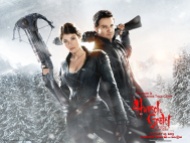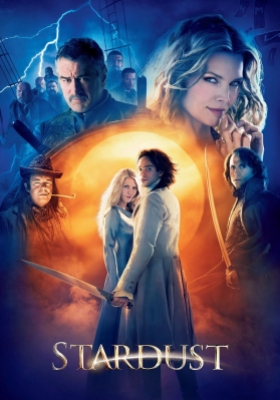Take a Trip Down Memory Lane with the Earliest Footage of London
Yestervid is a super cool website that compiles footage from the earliest days of filmmaking. This montage features some of the oldest film and sound recordings around the city of London, and they have a map showing the exact location and camera angle for reference.
The Italian Garden, London

Originally, the Kensington Gardens were part of the grounds of the Kensington Palace, the birthplace of Queen Victoria. During her reign her husband, Albert, commissioned the lovely Italian Gardens as a gift to his beloved and work was completed in 1860. Albert was an avid gardener and was entranced by the Italian-style water garden composed of ponds, terraces and raised beds along a geometric plan. This relaxing site sits on the Long Water, a river that runs into The Serpentine lake, so it is a nice place to spot birds and enjoy native water plants such as water lilies. After Albert’s death, Victoria had the Albert Memorial built on the south side of the Kensington Gardens.
Hyde Park

 There are eight Royal Parks in London, and this one dates back to the 1500s. Over time, different monarchs, architects, and gardeners have changed the landscape from a prime place to hunt deer to a sprawling grassy knoll perfect for picnics. It’s an appropriate site for “steam tourism” because the Great Exhibition was held on its grounds in 1851. There is nothing left of the Crystal Palace today, but this green respite is still a very nice place to visit.
There are eight Royal Parks in London, and this one dates back to the 1500s. Over time, different monarchs, architects, and gardeners have changed the landscape from a prime place to hunt deer to a sprawling grassy knoll perfect for picnics. It’s an appropriate site for “steam tourism” because the Great Exhibition was held on its grounds in 1851. There is nothing left of the Crystal Palace today, but this green respite is still a very nice place to visit.
 If you are there on a Sunday and you stop by Speaker’s Corner on the north-east side of the park, you may still see people exercising their right to free speech on the same spot that has seen countless protests and demonstrations, including several advocating for the Women’s Suffrage Movement in the early 1900s. The Kensington Gardens used to be part of Hyde Park, but today they are considered separate entities due to a road that was built in the 1820s.
If you are there on a Sunday and you stop by Speaker’s Corner on the north-east side of the park, you may still see people exercising their right to free speech on the same spot that has seen countless protests and demonstrations, including several advocating for the Women’s Suffrage Movement in the early 1900s. The Kensington Gardens used to be part of Hyde Park, but today they are considered separate entities due to a road that was built in the 1820s.
Saville Row

In the early days after its construction in the 1730’s, “Saville Street” was home to officers of the British military. The next century it became the first home of the Geographical Society of London (today known as the Royal Geographical Society, RGS), which was granted its Royal Charter under Queen Victoria. The RGS was responsible for financing such notable expeditions as David Livingstone’s sojourn into Africa, which lead to the discovery of the Nile’s source (named Lake Victoria) by Sir Richard Burton and John Speke. The RGS moved its headquarters in 1913, which was also the same year that women were first allowed to join.
During the Victorian era, Saville Row become strongly associated with the tailoring trade, and today the street is lined with stores selling natty men’s fashion. On a literary note, Jules Verne gives Phileas Fogg, the hero of Around the World in 80 Days, the address of No. 7 Saville Row. There isn’t a lot to see today, so for me, the most compelling thing about visiting this area ended up being the nearby Burlington Arcade.
The Reform Club

 If you have heard of this site, it is probably because of Around the World in 80 Days. Phileas Fogg’s journey began at The Reform (as it is colloquially named) over a game of cards, and ended in dramatic fashion on the same spot. The Reform was also featured in politically-minded novel entitled Phineas Finn, which was released as a serial by notable Victorian author Anthony Trollope from 1867-1868.
If you have heard of this site, it is probably because of Around the World in 80 Days. Phileas Fogg’s journey began at The Reform (as it is colloquially named) over a game of cards, and ended in dramatic fashion on the same spot. The Reform was also featured in politically-minded novel entitled Phineas Finn, which was released as a serial by notable Victorian author Anthony Trollope from 1867-1868.
The club was founded in 1832 as a liberal bastion for people to exchange radical ideas in response to the conservative Whig Party that had held power in London for decades. For many years it was the unofficial headquarters for the Liberal Party, and boasts a huge library filled with contributions from its members. Unfortunately, the inside of the club is off-limits to non-members except for select groups that can visit during a special architectural festival in September, and the exterior is nothing special. But, you can see a few photos of the interior on their website.
“Big Ben” and the House of Parliament

The House of Parliament and its iconic clock tower date to 1844 and were built after the original building was destroyed by a fire in 1834. Although today we know the tower as “Big Ben,” this is technically the name given to the huge bell that accompanies the world’s largest four-sided clock. The tower has officially been known as the Elizabeth Tower since 2012 to commemorate Queen Elizabeth’s diamond jubilee, and prior to that was simply The Clock Tower.
However, during Victorian times journalists often referred to it as St Stephen’s tower because Members of Parliament (MPs) held their proceedings in St Stephen’s hall. In fact, there is a St. Stephen’s tower on the Westminster premise, but it is much smaller than the clock tower, which is the third tallest in the world. While you can tour the House of Parliament, the tower itself is off-limits unless you are a British citizen with express permission from an MP.
The Science Museum, London

 This is definitely a must-see attraction for any Steampunk visiting London. The first exhibit you come to is called Energy Hall and features full-size steam engines and has interactive features that show you the physics of how they work and give the history of how they fit into the evolution of steam technology as a whole.
This is definitely a must-see attraction for any Steampunk visiting London. The first exhibit you come to is called Energy Hall and features full-size steam engines and has interactive features that show you the physics of how they work and give the history of how they fit into the evolution of steam technology as a whole.
But, the absolute best exhibit hall is Making the Modern world. It offers a veritable cornucopia of amazing inventions, including Charles Babbage’s Difference Engine No. 1 and a working model of a Victorian-era workshop run on a belt system.
Like the Museum of London, I would definitely recommend this as a great place to take people with mixed interests because the museum also has exhibits on the history of agriculture, real objects used in the early days of space travel and a “4D” cinema that has films on a wide range of topics.
The Albert Memorial

People spend a lot of their time focusing on Queen Victoria, but the Prince Consort Francis Albert Augustus Charles Emmanuel (but just Prince Albert for short) was also an incredibly influential figure in shaping the city of London. Among other things, he was instrumental in organizing the Great Exhibition (1851), reforming education in Britain, and championed the cause of the universal abolition of slavery. Though their marriage was to some extent arranged, the Prince Consort and the Queen clearly had a loving relationship, and when he died at the age of only 42 in 1861 his passing deeply affected Victoria. She wore mourning garb for the rest of her reign– her black clothing and understated appearance have become closely associated with her iconography and are seen in many depictions and monuments.
 There are many memorials and buildings that carry Albert’s name, and my favorite was the Albert Memorial in the Kensington Gardens. The huge, Gothic Revival-styled architectural part of the sculpture was “opened” in 1872, but it wasn’t formally dedicated by the Queen until the seated figure of Albert was placed into it in 1875. The polished bronze of the sculpture and the gilded angels on the canopy glint in the sunshine and catch the eye even from a great distance.
There are many memorials and buildings that carry Albert’s name, and my favorite was the Albert Memorial in the Kensington Gardens. The huge, Gothic Revival-styled architectural part of the sculpture was “opened” in 1872, but it wasn’t formally dedicated by the Queen until the seated figure of Albert was placed into it in 1875. The polished bronze of the sculpture and the gilded angels on the canopy glint in the sunshine and catch the eye even from a great distance.
The figure of the Prince Consort is not the only sculptural element of the memorial. There are also eight allegorical stone sculptures that are divided into two groups. One set expresses the Victorian sciences and arts of agriculture, engineering, commerce, and manufacturing, while the second set reflects the continents of Asia, Africa, The Americas, and Europe. The entire memorial is surrounded by a gorgeous iron fence painted burgundy and gold. There are also several mosaics in the canopy as well as a frieze, but the fence keeps you from getting close enough to see these elements well. I was really glad for the zoom feature on my camera, which allowed me to see some details, or you might consider bringing binoculars.










































































































